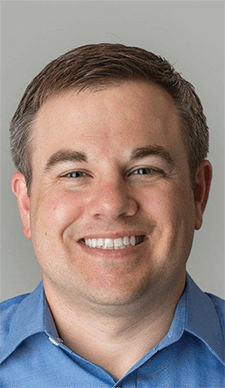First-round picks that are sure to elevate your dental product game
It’s easy to get stuck in a rut with the product selection at your office, particularly if you’ve been in the dental game for several years. I went through a solid decade without considering changing much of what I used because I thought it was working. It is good to be skeptical of a product—no one wants to be an early adopter of a dud. However, if you’re too stuck in your ways, you could miss out on some impressive innovations. Here are seven products I’ve added in the past five years that I’m really pleased I took a chance on. (As an aside, one of my favorite columns in this magazine has always been Joshua Austin’s Pearls for your Practice. The basketball metaphors are an homage to his witty baseball references.)
EQUIA Forte HT from GC America
I’d known about glass ionomers for years, but thought they were only good for temporary fillings or as crown and bridge cements. I now regret sleeping on them. Have you ever struggled to bond in a composite on the buccal of a second molar and then cringed at the sight of it one or two years later on recall? Oh good, it’s not just me. EQUIA Forte HT is a new category of glass hybrid. It’s self-bonding, extremely caries resistant, looks good enough on molar class V, I, or II, and can tolerate the tough conditions we run into in difficult-to-access areas. Handling the material does take a little getting used to, and you’ll need to squeeze in a hygiene check while it sets, but you will love the results on future recalls. Solid midrange turnaround jumper for GC America.
Bulk EZ from Zest Dental Solutions
What if I told you there was a strong, radiopaque, affordable material that you can use as a filling for the posterior, buildup material, post cement, and for the fabrication of long-term temporary crowns? What if I also told you that it works with your existing bonding agent and that it has an unlimited depth of cure, eliminating the need for a $2,000 curing light? Bulk EZ is a self-cure filling material, and I was an early adopter. I started using it when patients expressed concern about the cost of a crown, and I wanted a time saver for the MODBLXYZ composites. However, when I realized the recalls of these fillings looked consistently great, I started finding more and more ways to use this incredible material. If you’ve shied away from bulk-fill composites because they look too translucent and gray, this is the product for you! It has good optical opacity. Once you get used to using a runny material and figuring out how to overfill and cut back, you’ll love it! Steph Curry 35-foot bomb for Zest!
Microhybrid composite Z250 from 3M
You thought microhybrids disappeared from the market around the same time grunge music faded away, right? Here’s the thing: if you look at any table of nerdy stats on composites, under categories such as “flexural strength” or “compressive strength,” you’ll often find that a microhybrid leads the pack. How is that relevant? Class 4 anterior composites with an incisal edge get a ton of stress, and I hear dental friends complain that the anterior chipped tooth is one of their more dreaded restorations because it’s hard to predict how it will hold up. We got away from using microhybrids in dentistry because everyone wanted one composite that polished well and could be used in both the anterior and posterior. Nanohybrids hit the mark, but compromised strength for the sake of beauty. Going old school with microhybrids has improved my results in these high-stress areas. You might have to give the facial part of your restoration a small layer of a high-polish composite for the most esthetically savvy patients, but overall, using a microhybrid like Z250 or one from Cosmedent will cut down on the number of times you get that note from your front desk team: “Doctor, Karen chipped that composite on #25. . . again.” Sky hook for the score from 3M!
MicroEtcher IIA from Zest Dental Solutions
I’ve been using a MicroEtcher for well over five years. However, I used it as an instrument in the lab to clean the cement off dislodged crowns. You owe it to yourself to add one of these to each operatory in which you bond composites. I used to struggle with composite debonds on noncarious class V lesions, and on class IV chipped teeth. Microetching the enamel surfaces of these areas prior to bonding has made a big difference for me. Is it messy? You bet. Do I get a few snarky comments from patients about blasting sand in their mouth? Sure do. But I’d rather deal with that than a redo, and anecdotally, microetching has resulted in fewer debonds. Finger roll layup for Zest!
EXAFAST NDS from GC America
An impression material? Did I just take a DeLorean back to 2010? Well, hang on; I still take impressions for my crowns, and probably over 50% of you reading this do as well. If you’re still taking impressions, your goal is probably to minimize misery for the patient and maximize efficiency for yourself. I’ve used a four- to five-minute set material for the majority of my career, and I still would in a 4+ unit case. But for the 1- and 2-unit cases that make up the majority of your workload, Exafast VPS impression material delivers that sweet, sweet combination of 2.5-minute set, affordable price point, outstanding stability and accuracy rating by Clinicians Report, and excellent delivery with their unique 75 ml cartridges for heavy body material. Pair this material with the Mojo 2 Syringe from the Ho Dental Company, and you get the winning impression combination of good for you and easy to handle for the patient. Fast-break transition for the slam dunk from GC America.
PANAVIA V5 from Kuraray Noritake Dental Inc.
The Panavia name has been synonymous with good resin cement bonding since the ’80s. I’ve been practicing long enough to see the transition from Panavia 21 to Panavia F2.0, and now the Panavia V5 line. Panavia V5 has what you need in a resin cement, including easy-to-follow directions, the latest monomers for bonding to modern monolithic lab restorations, and good cleanup and handling properties. It comes in clear, A2, brown, white, and opaque. I like the A2 for lithium disilicate restorations, and I like the opaque for full-strength zirconia and metal-based restorations. Whenever I’m in a situation where I don’t have the preparation wall length or taper to lute a restoration, I’m happy I have Panavia in stock for a strong bond. Turnaround jump shot for Kuraray.
Sofreliner Tough from Tokuyama Dental Corporation
Do you like working with immediate dentures? Yeah, I didn’t think so. The healing phase is tough on patients and the doctors who have to listen to the complaints about them. What if there were a way you could give the patient a nice, comfortable soft liner that would actually hold up for the 6-12 months needed for healing without hardening up and starting to smell and crack? Enter Sofreliner Tough. This pink, flexible liner requires you to roughen the denture and use a primer on the acrylic, then apply the liner and let it set in the patient’s mouth. A few minutes of trimming and finishing, and you’ll have a retentive liner that’s resilient enough to last several months. In fact, it bonds so well that they make a solvent for removing it. This product has single-handedly made the immediate denture experience better for my patients, and I’m thrilled to be getting fewer callbacks. Windmill jam from Tokuyama!
Is your dental material product line stale? Is it full of products you aren’t sure why you selected in the first place? Have you missed out on some of the current advances in products due to the fear that they might not work? Or is it time to reconsider some of the older product staples and ideas that are still tried and true? It’s never a bad time to check your inventory and identify opportunities to add products that might save you money, improve clinical results, or aid in procedures you’re struggling with. I know that assembling an inventory of supplies I felt confident in was a personal practice booster. Happy catalog surfing!

